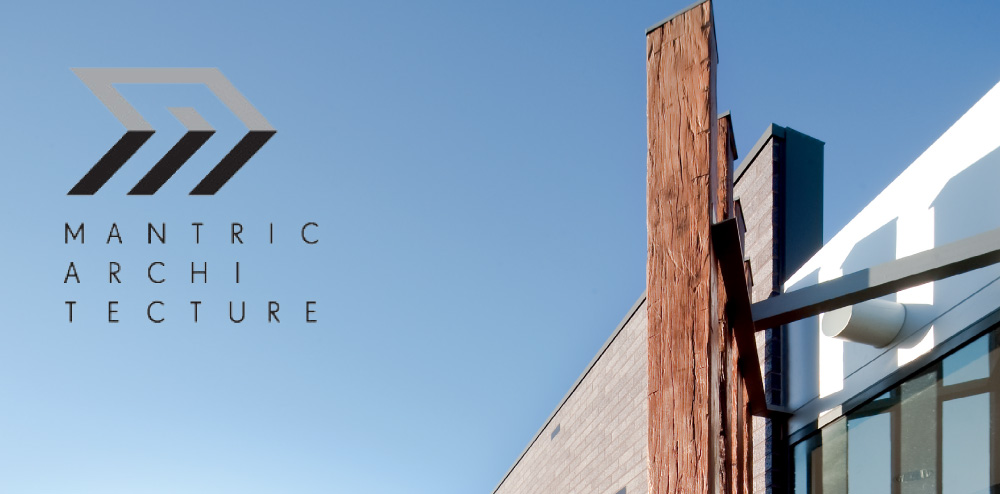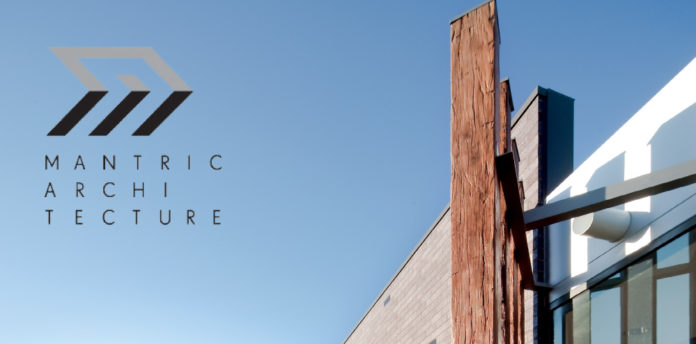
Genuine collaboration
Mantric Architecture is a boutique design practice, founded by directors David Newstead and Miranda Ellis. Over the years, they have focused on delivering high quality results for state and local government clients, and they have developed an impressive portfolio of highly acclaimed and well-received civic projects.
Prior to forming Mantric, David spent many years working in a larger practice on similar projects. He found the company was too large, and focus was too divided and decisions took too long to make. He started his own company in order simplify the process, and have a “smaller boutique team focus on a smaller number of projects.”
“Roughly 10 years ago I finally pulled the pin and decided to give that business philosophy a go,” he says. “I wanted to see if you could do larger scale work with a smaller, highly-skilled team.”
At first, Mantric Architecture was comprised of only three people. In the years since, they have grown that number to eight people. Throughout, the company has been taking on larger scale projects – some valued as high as $20 million – but only a few at a time, so they never have to compromise their attention to detail.
According to David, this philosophy has proven incredibly successful. He says it has allowed the company to “truly focus on collaboration,” in a way many of their larger competitors simply cannot.
“The feedback we get from our clients is that our process is ‘genuinely collaborative,’” he explains. “We listen to all of the people involved, every stakeholder, and we try to embed all of that feedback into our designs. Each project has its own identity because of that.”
“We’re not a practice that has a style – we actively try to avoid that kind of consistent stylization,” he adds. “We do that through listening.”
That feedback, David says, has been consistent across many of the company’s state and local government clients – many of whom have worked with Mantric Architecture on multiple projects.
“They say we’re better than most at genuinely listening – and then responding and coming up with solutions that are all about the people that will use the finished result,” he says. “That’s our design mantra – the biggest success measure is what the people think. It’s all about how people function within a site, how they enjoy it, and what they take away from it in terms of their comfort and wellbeing.”
In recent years, Mantric Architecture has delivered a series of children’s centres, sports centres, library works, and other types of community hubs. David says their team really enjoys that community involvement.
“We’re working on projects that large numbers of the public are going to engage with, and we take that responsibility very seriously,” he says. “We have to make sure we understand the community we’re working within, and what sets a community that’s in Hawthorne apart from a community that’s in Keilor. Learning that, and designing for it, is a big part of our job satisfaction.”
Because Mantric takes the time to understand the unique needs of the communities they work within, David says most of the feedback they get from the end-users is “overwhelmingly positive.”
“Which is relieving, because the community response is what gets us out of bed every morning,” he says. “It feels good to do projects the communities really support and need.”
People focused
Over the years, Mantric Architecture’s penchant for achieving high quality results in community settings has not gone unnoticed. At the 2013 LSAA Awards, for example, the new Glen Eira Sports and Aquatic Centre (GESAC) was awarded a High Commendation for its excellence in design and innovation. Mantric was the lead consultant and design architect for the project.
According to David, the team became involved in that project in 2008, and worked closely with the Glen Eira City Council from the master planning stage right through to completion. Their role included full design services such as architecture, urban design, and interiors.
Located in in East Bentleigh, Victoria, the centre was the single largest capital works project ever embarked upon by the Glen Eira City Council. It included a three court basketball stadium, a 950 square metre gym, program rooms, five pools, plus a spa, steam and sauna. It is also located within a popular sports reserve, right next to a softball field, a soccer field, and a cricket oval. Mantric’s design cleverly integrated the facility with that larger park precinct, while also meeting the needs of a “demanding and comprehensive brief.”
“We wanted to make sure the building expressed itself in a fun and playful-looking way,” David says, describing the vision their design. “We wanted it to look like something that was all about engaging with the public.”
One of the central obstacles to that mission, David says, was the fact that the centre had to be facing west for sustainability reasons. As a result, they were not able to include many windows, and had to implement a “number of strategies” to get people to still engage with the façade. Judging by the response from the community – and from the LSAA award – David believes they overcome that challenge.
“We’ve got fantastic feedback from everyone,” he says. “We’ve done exactly what we set out to do. We created a building that is striking visually, and looks like a building that you would go to have fun.”
David credits the success of the project to Mantric’s collaborative approach, and “people-focused process,” which led to a design solution that was specific to the client, site, and surrounding community.
He also credits the project’s success to the high environmental performance of the building. The most obvious element is the water harvesting and management system, which is expected to save the Council around 286 mega litres of water over a 25 year period.
According to David, Mantric aims to include those kinds of features in their projects as a matter of course.
“We don’t apply a sustainability filter over the top of our designs,” he says. “Instead, it’s embedded in everything we do. From the very first briefing, we’re always looking for opportunities to make sure the building has the right orientation – to make sure heat is going where you want it and being blocked where it’s not needed.”
“We’re also selecting materials that we know have a sustainable profile,” he adds. “We’re doing everything we can right from the start.”
Pushing the boundaries
When Mantric Architecture comes up with a design, David says their main objective is to achieve a high-quality, satisfying result for the people of the communities where they work. According to him, that is – and always will be – the company’s most important focus. At the same time, however, when award recognition from bodies such as the LSAA comes along, he says it’s still very satisfying.
“It’s humbling and a badge of honour, especially when you’re against such exceptional projects,” he says. “It’s really rewarding.”
“Every time we put pen to paper, we’re trying to do something that is better than the work we’ve done before and push the boundaries of excellence,” he explains. “To get a confirmation that we’ve achieved that is just brilliant for the entire practice. It means our blood, sweat and tears have been absolutely worth it.”
“The Glen Eira Sports and Aquatic Centre was a very demanding project,” he says. “It consumed four years of our lives. It’s great to see that it’s been so well received.”
Moving forward, David says his aim is to keeping pushing boundaries on projects like that one. He also sees the company growing a little bit better, but while still maintaining that boutique business feeling.
“We want to stay focused on doing a few projects really well, and not take on too much volume,” he says. “And hopefully there’s another Glen Eira out there in the near future, where we can apply some of the things we’ve learned. We now know that there are a number of things we can do better, and we’ll only get the chance to prove that by continuing to take on challenging projects.”
“It’s all about complexity for us,” he concludes. “The more difficult a project is, the more comfortable we are.”







